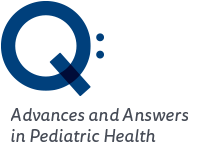- Doctors & Departments
-
Conditions & Advice
- Overview
- Conditions and Symptoms
- Symptom Checker
- Parent Resources
- The Connection Journey
- Calm A Crying Baby
- Sports Articles
- Dosage Tables
- Baby Guide
-
Your Visit
- Overview
- Prepare for Your Visit
- Your Overnight Stay
- Send a Cheer Card
- Family and Patient Resources
- Patient Cost Estimate
- Insurance and Financial Resources
- Online Bill Pay
- Medical Records
- Policies and Procedures
- We Ask Because We Care
Click to find the locations nearest youFind locations by region
See all locations -
Community
- Overview
- Addressing the Youth Mental Health Crisis
- Calendar of Events
- Child Health Advocacy
- Community Health
- Community Partners
- Corporate Relations
- Global Health
- Patient Advocacy
- Patient Stories
- Pediatric Affiliations
- Support Children’s Colorado
- Specialty Outreach Clinics
Your Support Matters
Upcoming Events
Colorado Hospitals Substance Exposed Newborn Quality Improvement Collaborative CHoSEN Conference (Hybrid)
Monday, April 29, 2024The CHoSEN Collaborative is an effort to increase consistency in...
-
Research & Innovation
- Overview
- Pediatric Clinical Trials
- Q: Pediatric Health Advances
- Discoveries and Milestones
- Training and Internships
- Academic Affiliation
- Investigator Resources
- Funding Opportunities
- Center For Innovation
- Support Our Research
- Research Areas

It starts with a Q:
For the latest cutting-edge research, innovative collaborations and remarkable discoveries in child health, read stories from across all our areas of study in Q: Advances and Answers in Pediatric Health.


Research at the Heart Institute
At Children's Hospital Colorado, we believe every child deserves a happy, healthy future. Child health research and innovation are at the core of our commitment to deliver the best clinical care for kids. With each patient we see in the Heart Institute, our physicians and caregivers seek to improve outcomes and deliver world-class care.
$10M+
External grant funding in 2022 to principal investigators
200+
Research publications in 2022
20
Active external grants with the Heart Institute as the lead principal investigator

It starts with a Q:
For the latest cutting-edge research and innovative collaborations in cardiology and cardiothoracic surgery, read more in Q: Advances and Answers in Pediatric Health.
Cardiology and heart surgery advancements
Our multidisciplinary team of pediatric subspecialists is advancing our understanding of how the Fontan circulation affects quality of life, school performance and development, as well as its impact on other organs in the body.
- As one of the first dedicated multidisciplinary clinics for children and adolescents with Fontan circulation, our team described how we created the clinic, what sort of issues our screen protocol uncovered and what interventions we recommend.
- Because achieving developmental milestones and maximizing school performance are so highly linked to quality of life, we were among the first to explore and describe the relationships between physiologic and neuropsychologic functioning.
- Our team has partnered with the bioengineering department to use cardiac MRI to evaluate the Fontan circulation and associate patterns of flow propagation with clinical outcomes, hoping to one day use MRI to predict adverse events.
- The Heart Institute team helped develop a multicenter learning network called the Fontan Outcomes Network that focuses on improving quality of life for patients with Fontan physiology.
- A recent study from Heart Institute researchers described the impact of a novel treatment for children and adolescents with Fontan physiology from a cardiac ultrasound (echocardiography) standpoint.
- From our unique perspective of living at an increased altitude, we’ve looked at how living in Colorado impacts outcomes for patients with single ventricle heart conditions.
- A $2.4 million award from the U.S. Department of Defense enables our team to study hypoplastic left heart syndrome (HLHS). The research explores changes in HLHS heart muscle cells that predispose them to failure, the effects of low oxygen, and various drug therapies to see if any improve heart muscle cell contraction.
Read some of our recently published single ventricle research studies
The doctors, scientists and nurses in our Pediatric Cardiovascular Research Laboratory perform basic and translational research that enhances understanding of the mechanisms underlying pediatric heart failure and identifies unique age- and disease-specific diagnostic, prognostic and therapeutic approaches that will improve outcomes.
Our work focuses on the two most important causes of heart failure in children: dilated cardiomyopathy and single ventricle congenital heart disease (CHD), such as hypoplastic left heart syndrome. We are uniquely positioned to perform this research at the University of Colorado School of Medicine and Children’s Colorado through the use of our extensive bank of human heart tissue.
Our team works to help children live longer, return sooner to normal childhood activities, and have fewer medication side effects and complications. Research efforts to improve outcomes and quality of life for the children we care for include:
- The TEAMMATE trial, a first-of-its-kind immune suppression study in pediatric heart transplant recipients examining the effect of lower dose immune suppression medication compared to standard dosing
- Cutting-edge medication trials, including the recent pediatric heart failure PANORAMA-HF trial, which completed enrollment and its final results will be published soon
- Clinical outcomes studies through participation in large, multicenter learning collaborations such as the Pediatric Cardiomyopathy Registry (PCMR), ACTION (Advanced Cardiac Therapies Improving Outcomes Network) and the Pediatric Heart Transplant Society (PHTS)
- A review article presenting a brief overview of SV anatomy and physiology, discussion of outcomes in the current era, risk factors associated with the progression to heart failure, the present state of knowledge regarding molecular alterations in end-stage SV heart failure and current therapeutic interventions
- A study looking to understand the mechanisms that lead to heart failure for some children after single ventricle surgery, including potential drugs to slow the progression and even eventually prevent the need for a heart transplant all together
Read some of our recently published heart failure and transplant research studies
- The CICU team has run an international survey on the use of vasopressin in patients with single ventricle CHD and is finalizing two clinical studies on the use of vasopressin in this patient population.
- The CICU team is pioneering the application of novel multi-omics technology to explore the complex mechanisms underlying acute postoperative organ injury and the molecular determinants of transition from acute injury to chronic multiorgan dysfunction.
- A multidisciplinary Cardiac Arrest Reduction and Excellence (CARE) Team was established to decrease the incidence of cardiac arrest and optimize resuscitation practices. Initially launched in the CICU, the debriefing, simulation and resuscitation education has now spread throughout the entire Heart Institute.
- CICU team members are part of a multicentric research study on high-fidelity simulation.
- Our investigators and informatics team led automated data extraction for the first multicenter study from the PCICS Research Innovation Group.
- Our CICU team continues to run clinical research projects on nutrition and outcomes.
Kawasaki disease (KD) is the number one acquired heart disease in the developed country. Our Kawasaki Disease Clinic is a multidisciplinary clinic between the Heart Institute and our Infectious Disease Program. The collaboration between these two departments has enabled us to take a unified approach in caring for these patients and improved our treatment plan. We are actively involved in the following KD research to help improve patient quality, management and outcomes:
- Participation in the American College of Cardiology Quality Network (ACC QNet) to improve outpatient quality metrics in taking care of KD patients
- American Heart Association-funded grant to study microRNA in distinguishing KD from other febrile illness; a study that has helped us differentiate KD and other childhood febrile illnesses
- International Kawasaki Disease Registry (IKDR): collection of data on outcomes in KD coronary artery aneurysms and medical management.
- Kawasaki Disease Comparative Effectiveness (KIDCARE) Trial: a randomized trial of second intravenous immunoglobulin versus infliximab for resistant KD
Multisystem inflammatory syndrome in children (MIS-C) is a severe multisystem hyperinflammatory illness temporally associated with preceding severe acute respiratory syndrome coronavirus-2 (SARS-CoV-2) infection or exposure. Patients have cardiac dysfunction and coronary artery dilations or aneurysms similar to KD patients. Our research has demonstrated that MIS-C patients have better recovery and outcomes after receiving dual therapy (intravenous immunoglobulin and infliximab) at diagnosis. MIS-C patients are less likely to require additional therapy, have decreased development of heart dysfunction, have a more rapid decline in inflammation, and have a decreased intensive care unit length of stay. Children’s Colorado is participating in the Long-Term Outcomes in Multisystem Inflammatory Syndrome in Children (MUSIC study) national clinical trial.
Read some of our recently published Kawasaki research studies
Our researchers are actively involved in interventional cardiology research that enables us to provide advanced treatment options to our patients. Because we believe that all children should benefit from our research insights, we collaborate with and share our expertise with pediatric experts nationwide.
- Our three core attending physicians are authors on numerous peer-reviewed manuscripts over the last 18 months and over 20 invited lectures at national and international meetings. They have 10 scientific abstracts accepted for publication at major national and international conferences from 2022 to 2023.
- We are among the leading study recruiters in five multicenter trials for cutting-edge equipment and procedures. We have access to all FDA-approved and in-trial percutaneous pulmonary valve devices in the United States.
- We are leading the way in the use of virtual reality in cath lab case planning and the use of percutaneous ECMO for rescue therapy due to COVID-related illness. We have developed and are publishing on risk-benefit scoring for pediatric and ACHD interventional procedures.
- We are developing novel methods to minimize risk and procedural complexity in percutaneous valve implantation and, with the University of Colorado Inworks Innovation Initiative, have developed novel methods of analyzing 4D CT data to define the behavior of the right ventricular outflow tract.
- We are pioneering the use of Optical Coherence Tomography in CHD as well as the novel use of computational fluid dynamics.
Our laboratory resources:
- We have the only in-house 3D printing workshop based on interventional angiography in the country. We have a flow dynamics and valve and stent bench testing lab on campus and are linked with the biomedical engineering school on a number of undergraduate and postgraduate student projects.
- We have a dedicated flow dynamics lab with an aim to minimize the need for animal and human testing by simulating complex congenital physiology on a benchtop. This led to several patents and collaborative projects across the University of Colorado system.
- Our clinician researchers hold several competitive grand awards for innovative imaging and tissue engineering projects.
Read some of our recently published interventional cardiology research studies
Children and adults with CHD require specialized techniques to manage their unique heart rhythm abnormalities. Our electrophysiology team has led the way in developing novel strategies to diagnose, treat and manage these complex patients.
- Using machine learning and collaboration with biomedical engineering, our team has sought to discover subtle clues that can predict the onset of diastolic dysfunction and potentially prevent the development of sudden cardiac death or progressive cardiac disease.
- We were the primary international center that evaluated the subcutaneous implantable cardioverter defibrillator (SICD) in those with CHD. This novel device allows for the recognition and treatment of life-threatening arrhythmias without the need to enter the heart.
Cardiovascular genetics is a new and rapidly evolving field within pediatric cardiology. Our active research programs focus on several projects, including:
- Genetic factors that contribute to heart failure in dilated cardiomyopathy and hypoplastic left heart syndrome
- The role of genetic diagnosis inpatients who are in need of a heart transplant
- The role of genetic diagnosis in outcomes of infants under 6 months of age who require surgery for congenital heart disease
- Outcomes of multidisciplinary care teams in Turner syndrome, Noonan syndrome and hereditary hemorrhagic telangiectasia
- The role of disease-specific treatment of cardiac, vascular and lymphatic disease in RASopathy disorders
The advanced cardiac imaging team, comprised of cardiologists, radiologists and bioengineers, has been developing new techniques and novel frameworks for understanding acquired and congenital heart disease in innovative and clinically useful ways. We have made major advancements in understanding single ventricle heart disease and pulmonary hypertension:
- In single ventricle heart disease, our team has been able to use cardiac MRI to link ventricular dyssynchrony, aortic arch geometry and flow propagation through the body to important clinical outcomes. This provides important insights into how CMR could be used to help predict adverse outcomes.
- In children and adolescents with pulmonary hypertension, our team has used a combination of 2D, 3D and 4D imaging based on echocardiography and cardiac MRI platforms to validate new ways to measure the many facets of cardiac muscle function. Following these metrics over time helps us identify patients at risk for acute events before they happen.
- Pre-surgical planning of congenital heart disease using 3D echocardiography has advanced our understanding of heart valve repairs and complex surgical baffle repairs for complex congenital heart disease. We are the primary research site for the 3D consortium in the nation and a leading site within the industry to develop pediatric 2D and 3D ultrasound probes.
- 3D echocardiography-guided catheter interventions in congenital heart disease has reduced radiation use. Our team uses fusion imaging to reduce the amount of radiation exposure of our congenital heart disease patients and we are the leading research program in developing this advanced fusion imaging tool to better understand congenital heart disease and structural heart interventions.
Children’s Colorado is a national leader in CHD research and a member of Cardiac Networks United, a group of collaboratives aimed at improving the outcomes of patients with congenital and acquired heart disease. These collaboratives include:
- Pediatric Cardiac Critical Care Consortium (PC4)
- Pediatric Acute Care Cardiology Collaborative (PAC3)
- Cardiac Neurodevelopmental Outcomes Collaborative (CNOC)
- National Pediatric Cardiology Quality Improvement Collaborative (NPC-QIC)
- Advanced Cardiac Therapies Improving Outcomes Network (ACTION)
- PediPERForm Learning Network (PLN)
- Fontan Outcomes Network
- Congenital Cardiac Research Collaborative (CCRC)
Through our work in these multi-institutional collaboratives, we have helped improve the care of patients with CHD, not only at Children’s Colorado, but across the nation. Our work in these networks has allowed us to identify practice variation between centers and best practices for diagnosing, treating and preventing morbidity and mortality.
Through our participation in the Cardiac Networks United, we have successfully decreased the incidence of CICU cardiac arrest, improved outcomes for our single ventricle population and improved outcomes for our patients with ventricular assist devices. We are currently participating in multicenter quality improvement initiatives to:
- Identify and improve healthcare equity and decrease disparities
- Decrease opioid and benzodiazepine exposure in CICU patients
- Decrease emergent transfers from the acute care unit to the cardiac intensive care unit
- Define best practices for treating chylothorax
- Implement programs in the early postoperative period to enhance long-term neurodevelopmental outcomes

"Kids deserve focused study. We shouldn’t just rely on what is known to occur in adults; you have to study children just as carefully, just as intensely, as you study adult disease."Shelley Miyamoto, MD
What our heart research means for kids
The Heart Institute is actively engaged in research to determine the best ways to care for children with congenital or acquired heart disease. There are approximately 80 research studies occurring within the Heart Institute with more than half that are actively enrolling. These studies range from examining cells in the heart to clinical trials of new medications or devices used to treat heart problems in kids.
Funding for the Heart Institute research portfolio comes from many different sources. These sources include grants from the National Institutes of Health, American Heart Association, Additional Ventures, Department of Defense and other research foundations, industry departments, internal awards and from the department itself. The Heart Institute is eternally thankful for all the children and families who choose to participate in research. Without them, we would not be able to learn the best ways to take care of kids with congenital or acquired heart disease.



 720-777-0123
720-777-0123





